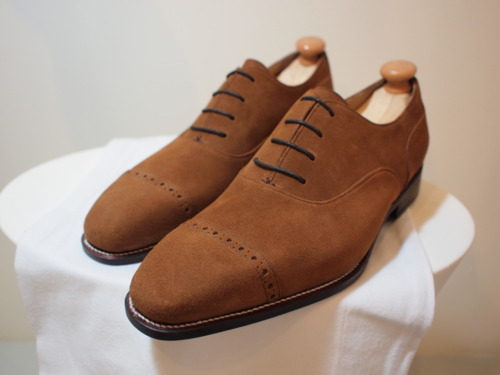
For a number of reasons, the market has become such that most dress shoes retailing for under $300 aren’t really worth buying. Thus, if you want nice dress shoes, you either have to wait patiently for sales or search around on eBay. Lately however, a few new companies have cropped up offering well-made, affordably priced options. One of them is Ed Et Al, a Singaporean company that started just last year. Ed Et Al sells Goodyear welted shoes made from full grain leather uppers for less than $200. Shipping to the US bumps it up a little, but they still outclass other shoes in their price tier.
The company has three lines. The ready-to-wear range includes everything from loafers to boots to oxfords. They’re made from Southeast Asian leathers and feature a few points of hand construction, such as hand lasting and hand finished antiquing. This line is made in a workshop in Vietnam, but to high standards. Next, there’s a custom line where clients can dictate their own design, right down to the color of the stitching. There are no fixed models here, so new patterns can be cut for each person. Finally, there is the bespoke range, where clients get custom lasts made by Springline of Northampton and several fittings before the order gets finally made. Both the custom and bespoke line are made in Singapore and use French and Italian calf leathers.
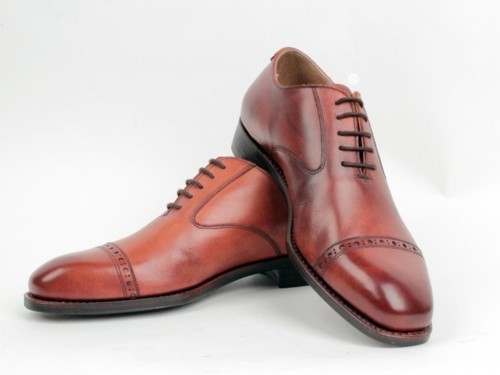
Having seen the ready-to-wear line, I can say they’re a very good value. The leathers aren’t as finely grained as what you’d find at Allen Edmonds or Crockett & Jones, but they’re still full grain and very nice. They certainly beat almost any pair of dress shoes on the market retailing under $300. The company’s custom and bespoke lines cost a little more, but they’re made to even higher standards and use European leathers. I also like that the company has a one-year guarantee from defects, and offers a recrafting and refurbishing service. It’s nice to not only see a company produce well-made, affordable options, but also stand by their products.
The company’s co-founder, designer, and shoemaker, Edwin Neo, was an apprentice of Marcell Mrsan, the Hungarian master shoemaker who runs Koronya Boots & Shoes. Koronya, for those who may not know, is a rather celebrated shoe company among shoe enthusiasts. Having graduated from his apprenticeship, Edwin now makes all of the Ed Et Al’s custom and bespoke shoes, and does all the quality checks on the ready-to-wear line. I was given the opportunity to chat with Edwin last month, and decided to ask him some fairly nerdy questions about shoemaking. Click through below to read our chat, but be forewarned that it’s fairly nerdy. If you’re not interested in technical details, you can just stop here and know that Ed Et Al is a great place for affordable footwear.
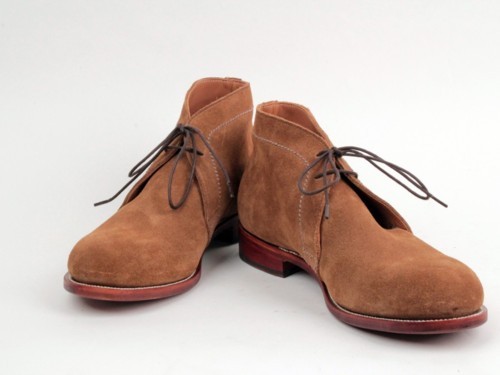
Derek Guy: People on various online menswear forums have debated a number of topics concerning the construction and quality of shoes. Unfortunately, much of this debate happens between people who have no professional experience in the trade. Given your expertise, I was wondering if you could weigh in on a few issues. First, between Goodyear and Blake/ Rapid construction, is there one that’s better than the other? What are the advantages and disadvantages of each?
Edwin Neo: They have both their pros and cons. Goodyear (GYW) is deemed as the superior construction technique due to the dual layers of stitching. This allows for easy sole changes over the lifetime of the shoes. However, as the name suggests there is a need for a welt and while many shoemakers, myself included, have been able to thin the welt down significantly, there are types of shoes that require a even slimmer profile, slippers being a prime example.
Blake and Blake/Rapid is a very sturdy construction. The main disadvantage of this would be that since the construction requires the insole to be punctured for the thread, it would not be able to last many resolings before needing to be replaced as well. The Blake method, however, gives a very slim profile.
DG: Some say that Goodyear welting is inferior to hand welting. The contention is that Goodyear welting still involves gemming, which as you know is the process of attaching a canvas rib to the underside of the insole. This is done in order hold the insole (and shape of the shoe) in place. It’s claimed that for a number of reasons, this provides another point for failure. In your opinion, is gemming a real fault? Is hand welting better than Goodyear welting?
EN: Handwelting is without a doubt superior to GYW. The fact that the rib is part of the insole gives that much more longevity to the shoes. However, I will not say that “gemming” is a fault. It is the one technique that has allowed the average man on the street to buy quality shoes. In all my years doing repairs and later making shoes, I have never seen a pair of GYW shoes fall apart at the “gemming.”
(Derek’s note: Ed Et Al’s ready-to-wear line is Goodyear welted or made with Blake/ Rapid construction. The bespoke lines, however, are hand welted.)
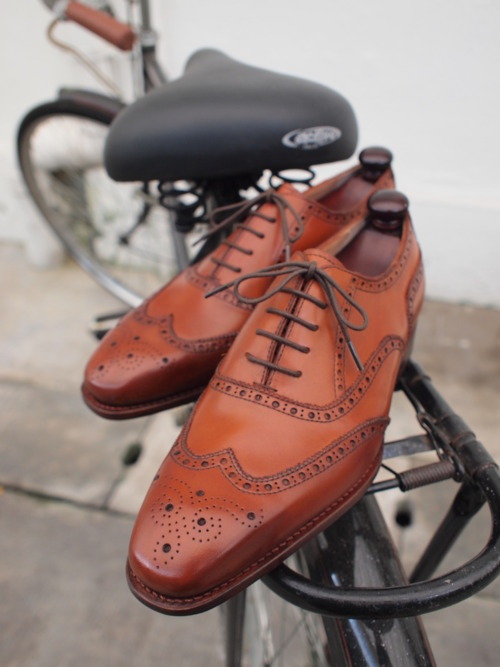
DG: There has also been some debate about toe puffs, the reinforcing layer of material that helps keep the toe box stiff and prevents it from dimpling. Toe puffs have traditionally been leather, but since manufacturers are trying to save costs, most now use synthetics. Is there any advantage in using leather?
EN: For the shoemaker making by hand, leather puffs allows very detailed refinement, being able to shape the toe to the exact image they have in their minds. This is not achievable by synthetic toe boxes.
DG: What are the advantages to pulling the leather over the last by hand (i.e. “hand lasting”) rather than by machine? Is this just an artisanal detail that for a connoisseur to enjoy, or are there practical advantages?
EN: Hand lasting allows the maker to form the shoe to the lasts more closely. Every upper is different and may require different pulls to achieve a well lasted shoe. Lasting by hand also allows the maker to ensure that none of the lasting folds can be seen.
As a side note, our shoes are all hand lasted, even the ready-to-wear range.
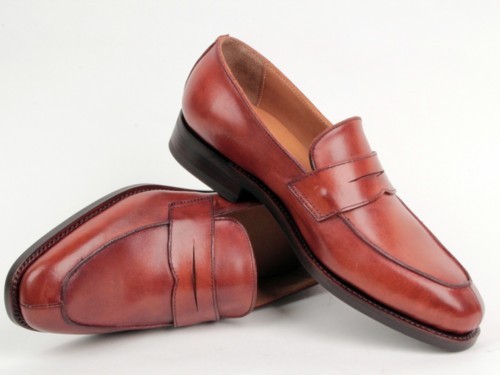
DG: What constitutes good full-grained leather? Besides the absence of scars or marks, what do you look for when sourcing your materials? Is there a secret to why some shoes seem to age better than others?
EN: Shoemakers look for the hand of the leather and the stretchiness in certain directions. This gives the maker a pretty good prediction of how the shoe will age with wear.
When the uppers are cut properly with regards to the hand, the shoes will age beautifully without stretching in wrong directions. If it’s not, creases can occur in unwanted places.
DG: Thanks for your time, Edwin. To end, what plans do you have for future collections/ models? Is there anything coming up that might be of interest to our readers?
(To learn more about Ed Et Al, you can visit their website, blog, and Facebook page)